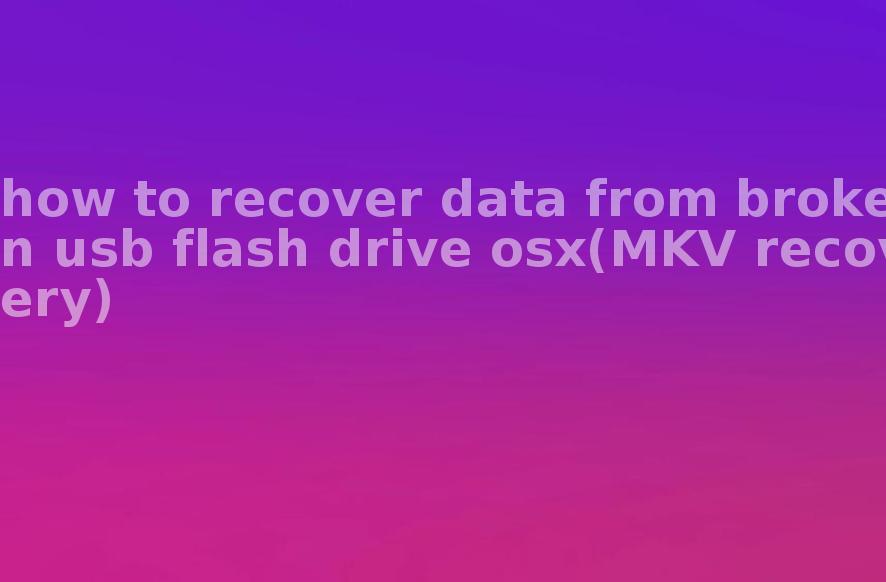how to recover data from broken usb flash drive osx(MKV recovery)
2023-10-20 11:50 298
Part I: Overview of the context in which the document was recovered
The broken USB flash drive is a commonly encountered issue, and data recovery becomes crucial in such situations. OS X, the operating system used in Apple devices, provides built-in utilities to recover data from a broken USB flash drive. However, before attempting any data recovery process, it is important to understand the context in which the document was recovered.
1. Physical damage: The USB flash drive may have suffered physical damage due to accidents like bending, crushing, or exposure to extreme temperatures. This physical damage can lead to a broken USB flash drive.
2. Connectivity issues: Sometimes, the USB port or cable used to connect the USB flash drive to the device may have connectivity issues. This can result in a broken USB flash drive where the device fails to recognize it.
3. File system corruption: File system corruption can occur due to improper ejection, virus attacks, power outages, or sudden system crashes. This corruption can render the USB flash drive unreadable and broken.
Part II: Causes of generation
The generation of broken USB flash drives can be attributed to various causes, including:
1. Physical damage: Dropping, mishandling, or exposing the USB flash drive to extreme temperatures can cause its internal components to become damaged, resulting in a broken drive.
2. Manufacturing defects: In some cases, USB flash drives might have manufacturing defects that can lead to their malfunctioning or breaking.
3. Aging or wear and tear: Continuous usage over time can cause the USB flash drive to degrade, resulting in a broken drive.
Part III: The solution and specific steps
To recover data from a broken USB flash drive on OS X, you can follow these steps:

1. Connect the USB flash drive to your Mac and check if it is recognized. If not, try connecting it to another USB port or using a different cable.
2. If the USB flash drive is recognized but inaccessible, open "Disk Utility" from the "Applications" > "Utilities" folder.
3. In Disk Utility, select the broken USB flash drive from the left pane.
4. Click the "First Aid" button and wait for the process to complete. Disk Utility will attempt to repair any logical or file system errors.
5. Once the repair process is complete, check if you can access the USB flash drive and recover your data.
6. If the USB flash drive is still not accessible, you can use third-party data recovery software specifically designed for Mac, such as Disk Drill or EaseUS Data Recovery Wizard. These tools can help recover data from broken and inaccessible drives.
Part IV: Types of other files that can be recovered
Besides MKV files, data recovery from a broken USB flash drive on OS X can potentially recover various other types of files, including:
1. Documents: Word files, PDFs, Excel spreadsheets, PowerPoint presentations, etc.

2. Photos: JPEG, PNG, RAW, etc.
3. Videos: MP4, AVI, MOV, etc.
4. Audio files: MP3, WAV, FLAC, etc.
5. Archives: ZIP, RAR, 7z, etc.
Part V: Frequently Asked Questions
1. Can I recover data from a physically damaged USB flash drive? Yes, data can be recovered from physically damaged USB flash drives. However, it is recommended to seek professional data recovery services in case of severe physical damage.
2. Is there any software to recover data from a broken USB flash drive on OS X? Yes, there are several software options available for data recovery on OS X, such as Disk Drill, EaseUS Data Recovery Wizard, and Stellar Data Recovery.
3. How can I prevent data loss from a broken USB flash drive? To prevent data loss from a broken USB flash drive, it is recommended to regularly backup your data. Additionally, handle the drive with care, avoid exposing it to extreme temperatures, and safely eject it from the device after usage.









